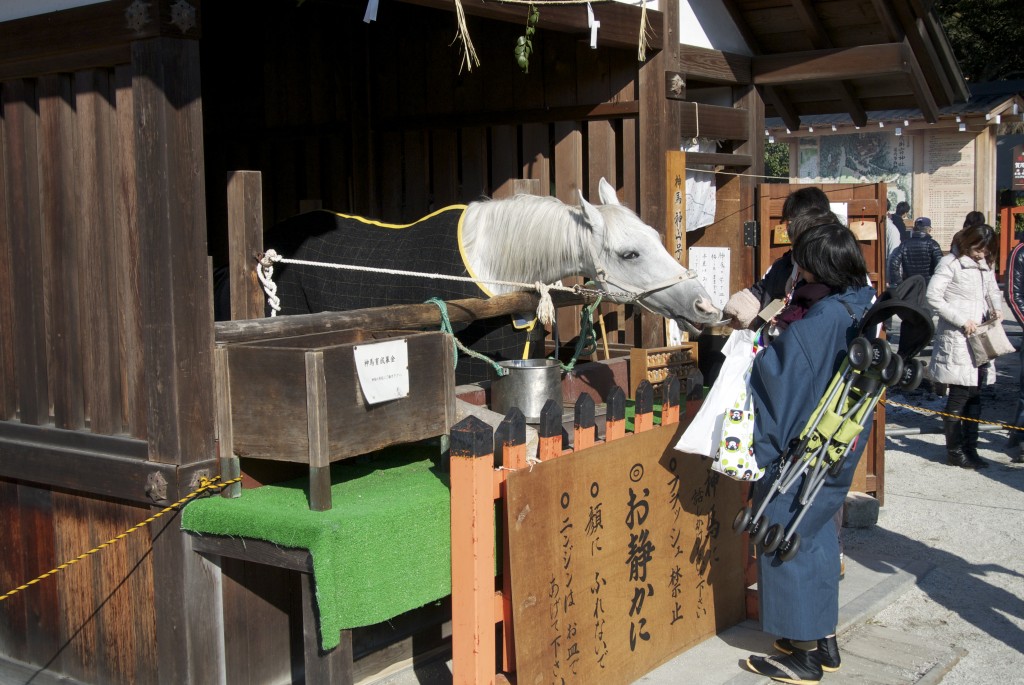
The white horse at Kamigamo Jinja being fed a carrot. You can feed but you can't touch because of the steed's purity.
Anyone familiar with Shinto will know about the significance of horses. They are thought to be intermediaries between this world and that of the kami. Votive tablets (ema, literally ‘horse pictures’) originated in the practice of offering horses to the kami. Still today one sees horse statues at some shrines, while others have a white horse stabled on the grounds or put on horse events during their annual matsuri.
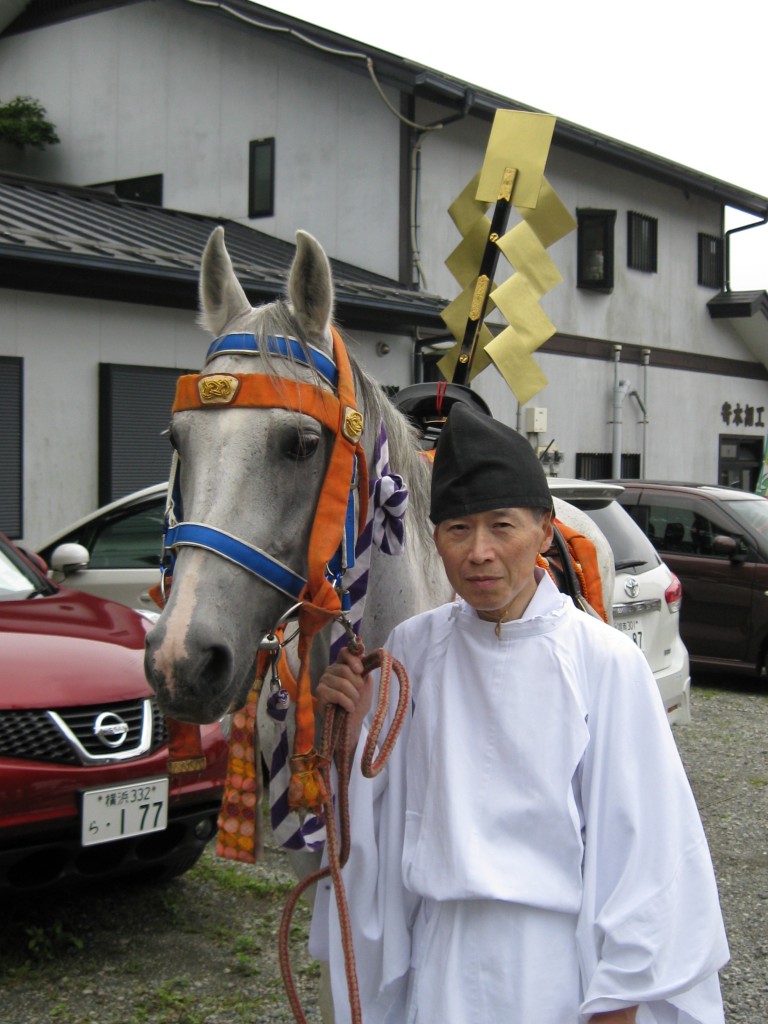
A symbolic horse-borne kami and priest at the Hakone Festival
In a fascinating article about connections with the rest of Asia, Mark Riddle looks at the subject through the lens of the Indo-European cult of the sacred horse. He identifies the principal features as follows: Horses were sacred symbols which were associated with a fertility cult and with rain. A white horse symbolised the sun and was often used in ritual sacrifice. Horses were also associated with death and funereal symbolism.
If one thinks of Mongol warriors, then clearly the horse was a vehicle of power that enabled its rider to dispense death and destruction over wide areas. It was quite literally a seat of authority. To a lowly peasant, the fast moving creature must have seemed imbued with an air of divine power. It’s but a short step to imagine the horses descending with their godlike riders from heaven. Something of this clearly entered Japan at a time when Shinto was still in the process of formation.
“Beginning in the fourth century,” writes Riddle, “horses of Inner Asian provenance were brought to Japan, and the fifth century saw the apogee of the mounted warrior culture.” The result can be found in a variety of horse-related activities in Shinto, from the use of ema to popular horse-led festivals. Here are a few examples given by Riddle:
* Horses in early tomb paintings [and haniwa] suggest that their swiftness of speed enables supernatural communication with the world beyond.
* Thrice monthly a sacred white horse is led before the kami in the Honden (Sanctuary) at Ise Jingu, combining the aspects of sun worship and sacral kingship found in the horse cult in Central Asia.
* The Shoku Nihongi (797) mentions that horses were dedicated to shrines in order to stop rain (white horse) or make it rain (black horse). [If I’m not mistaken, such a practice was carried out at Kibune Jinja near Kyoto.]
* In Eastern Japan at Tanabata (July 7) a greeting horse (mukae-uma) is hung from gates and trees to be offered as a mount for the visiting deity. It’s also offered to ancestral spirits at Obon.
***********************************************************
For an obituary of Mark Riddle, who died in 2011, click here.
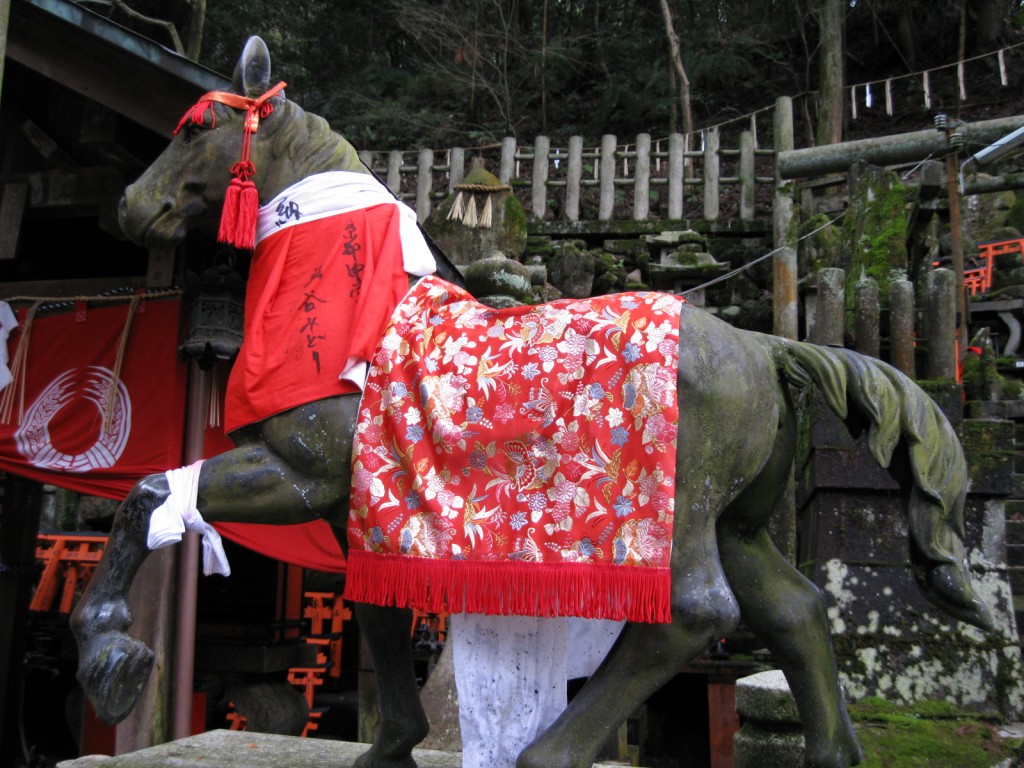
Horse statue at Fushimi Inari
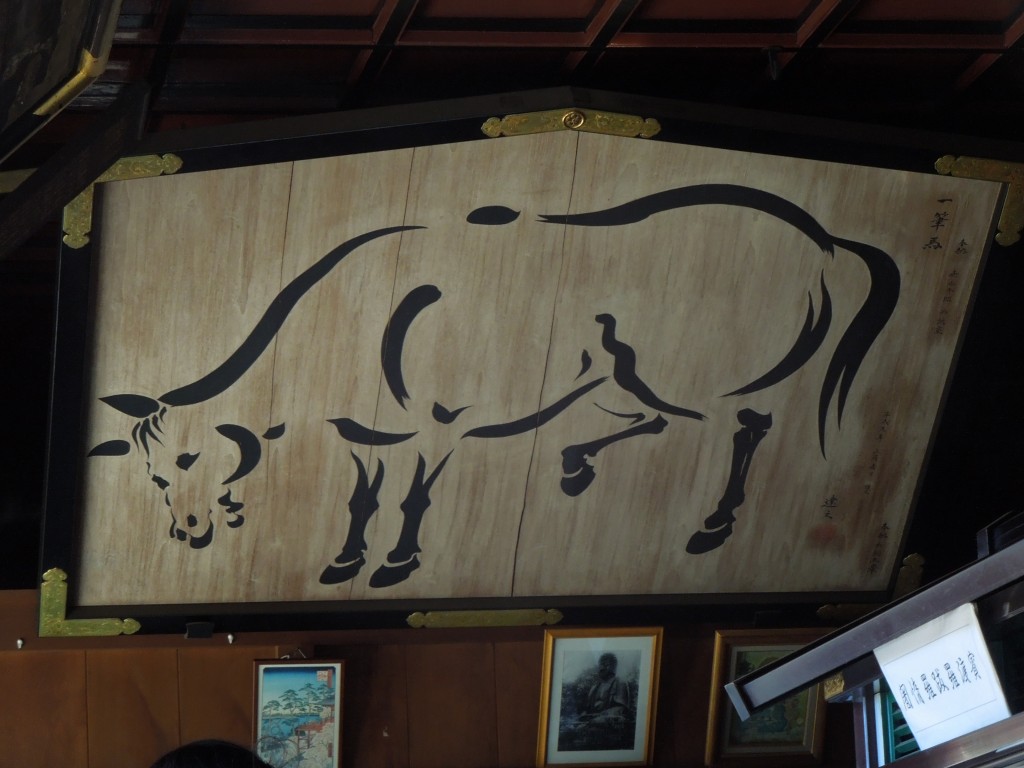
Modern horse depiction on an ema
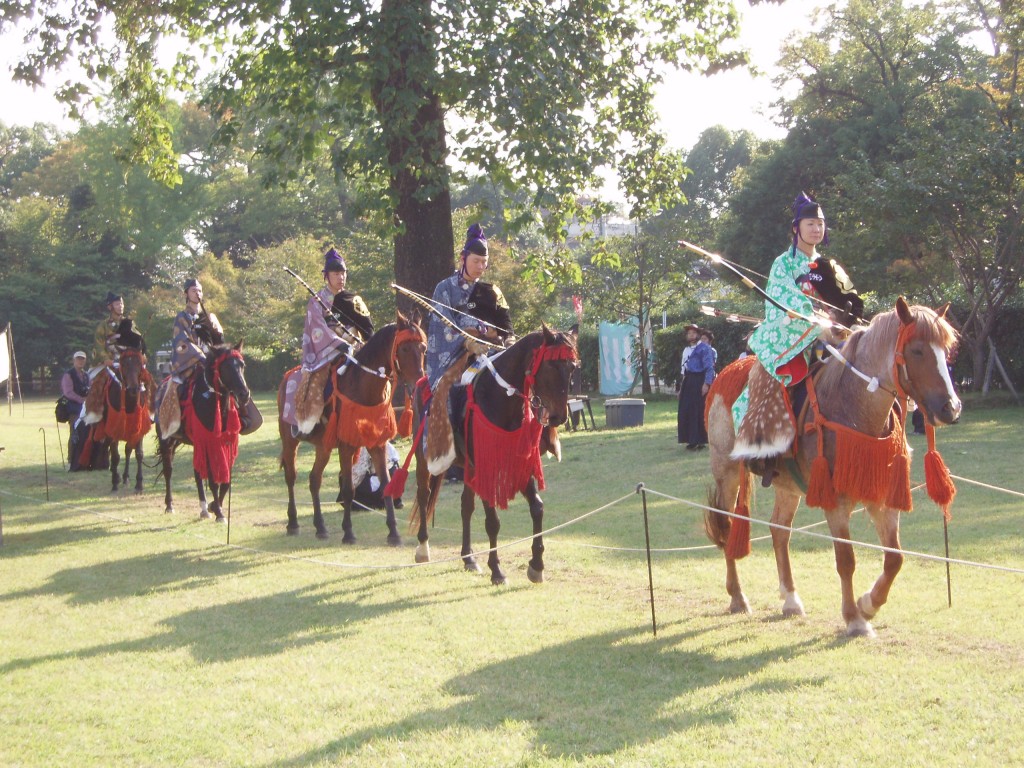
Horse archery event at Kamigamo Jinja

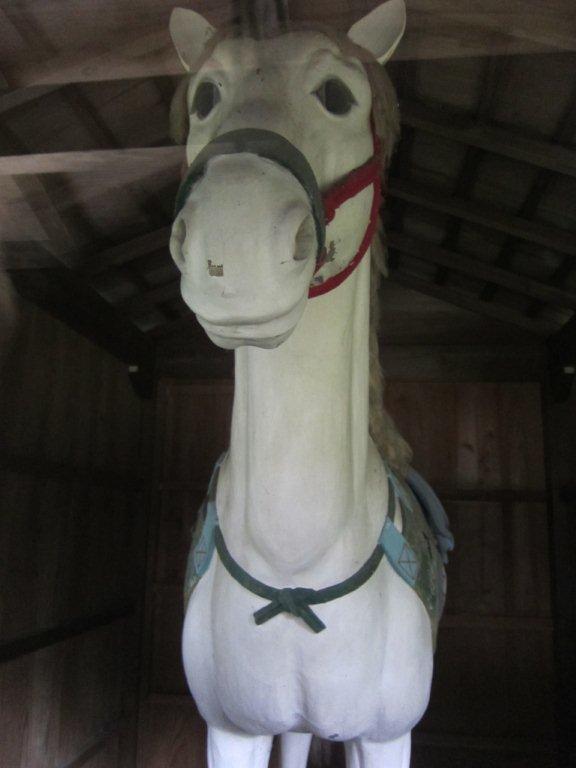
Leave a Reply